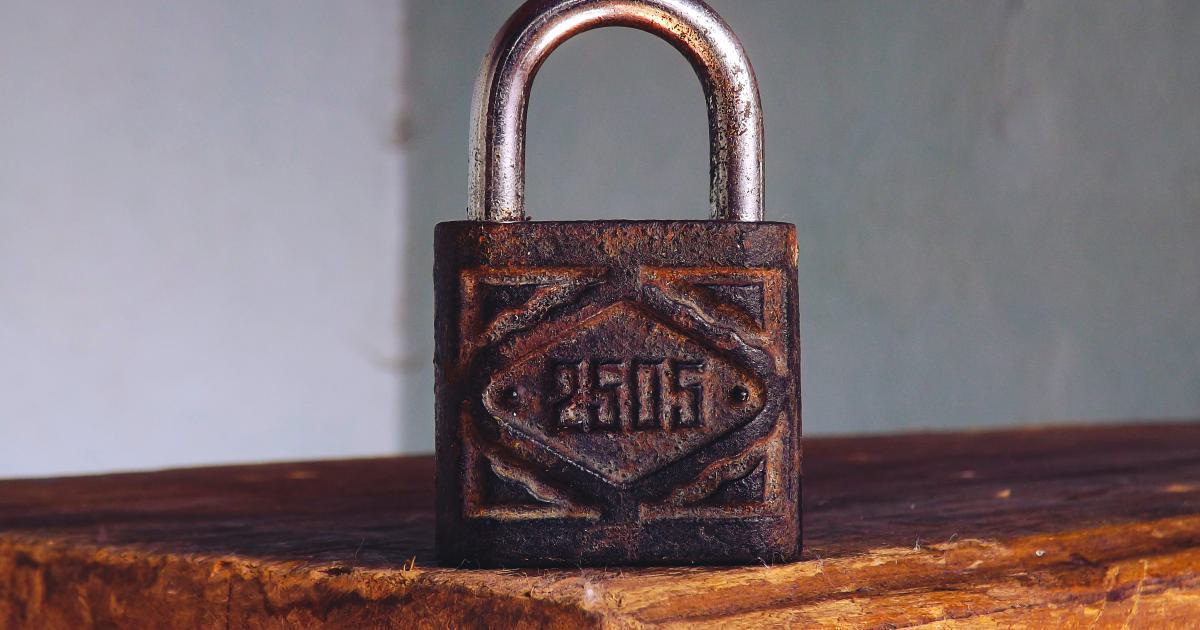How to Identify Crypto Scam Signs Quickly

The exponential growth of cryptocurrencies has brought with it a parallel rise in deceptive schemes and fraudulent activities. Among the most pressing issues today are the crypto scam signs that potential investors must recognize immediately to avoid significant financial loss. With a myriad of online platforms, social media channels, and investment opportunities, scammers are continuously devising sophisticated methods to lure unsuspecting individuals into their traps. This article offers a deep dive into identifying crypto scam signs quickly, backed by thorough explanations, real-world examples, step-by-step recommendations, and expert tips. Whether you are new to the crypto space or a seasoned investor, understanding these warning signs is essential for protecting your assets and maintaining digital financial security.
Cryptocurrency scams typically involve promises of high returns with little or no risk, requests for confidential information, and unsolicited investment opportunities that defy conventional market practices. In the following sections, we will explore the typical red flags, elaborate on various scam types, and provide actionable strategies to identify and mitigate risks at every stage.
Recognizing the Anatomy of Crypto Scams
Crypto scams come in many forms, ranging from phishing attempts and Ponzi schemes to fake initial coin offerings (ICOs) and impersonation of legitimate crypto exchanges. Scammers often mimic the appearance of well-known platforms and present offers that seem attractive but fall apart under closer scrutiny. To navigate these complexities safely, investors must acquaint themselves with different scam tactics and learn how to spot their characteristic hallmarks.
Understanding Scam Tactics
Crypto scam signs usually include the following tactics:
- Unrealistic Promises: Offers of guaranteed profits, extremely high return rates with minimal risk, or claims of insider investment tips are commonplace red flags.
- Pressure Tactics: Scammers often use urgency by stating that funds must be transferred immediately, leveraging scarcity or limited-time offers to rush decisions.
- Lack of Transparency: Legitimate companies provide detailed information and verifiable backgrounds. In contrast, scammers avoid verifiable identities, contact details, and regulatory disclosures.
- Impersonation: Fraudsters frequently impersonate reputable figures, companies, or even regulatory bodies to build trust and mislead investors.
- Complex Investment Schemes: Some scams rely on complex explanations that seem designed to confuse the audience, making it difficult for victims to ask the right questions.
Understanding these tactics will help users recognize that if an investment opportunity appears too good to be true, it likely is. A critical approach to due diligence and healthy skepticism is the first step in identifying and avoiding crypto scam signs.

Common Crypto Scam Types
Let’s break down some of the most common types of crypto scams, discussing each in detail with real-world examples and techniques to spot them early.
1. Phishing Scams and Fraudulent Websites
Phishing scams are designed to steal sensitive personal information. Scammers create websites that look almost identical to genuine crypto exchanges or wallets. They then trick users into entering their credentials, giving scammers access to their accounts.
- Example: In one widely publicized case, users were bombarded with emails that appeared to be sent from a major exchange. The emails contained alerts stating their accounts had been compromised and directed users to a duplicate login page.
- Identification Tips: Always check the domain name carefully; ensure that the website uses secure connections (look for "https"). Avoid clicking on links from unsolicited emails and, instead, navigate directly to the website from your trusted browser bookmarks.
2. Ponzi Schemes and Pyramid Investments
Ponzi schemes entice investors with promises of exceptionally high returns by paying earlier investors with funds from new participants. These schemes collapse when the pool of new investors dries up.
- Example: A notorious crypto-related Ponzi scheme promised returns of 20% monthly. As word spread, more people joined, but eventually, the scheme collapsed, leaving many investors with substantial losses.
- Identification Tips: Look out for any investment that guarantees consistent high returns regardless of market conditions. Legitimate investments are subject to market risks and volatility. Regulatory warnings and third-party audit reports should further validate any investment claim.
3. Fake ICOs and Scam Tokens
Initial Coin Offerings (ICOs) raise funds for new crypto ventures. However, scammers have capitalized on the investor hype surrounding ICOs by introducing fraudulent tokens and collecting funds without delivering on their promises.
- Example: During the ICO boom of 2017, numerous projects emerged with slick marketing and professional-looking websites but without any working product or clear roadmap. Many of these projects disappeared after collecting substantial sums from investors.
- Identification Tips: Research the team behind the ICO, look for verifiable credentials, and examine the project’s whitepaper with a discerning eye. Avoid projects that lack transparency, credible partners, or a realistic implementation plan.
4. Social Media and Influencer Fraud
Social platforms have become fertile ground for scams. Fraudsters often leverage influencers or create fake profiles that mimic trusted figures to promote dubious investment opportunities.
- Example: Fake social media accounts masqueraded as well-known crypto influencers and led followers to invest in scam projects, using misleading endorsements to build credibility.
- Identification Tips: Verify the authenticity of social media accounts by cross-referencing with official channels. Look up independent reviews and feedback from other users and avoid making quick decisions based solely on social media endorsements.
Red Flags: Crypto Scam Signs to Watch For
Identifying crypto scam signs quickly is vital for anyone involved in digital currency trading or investment. The following section summarizes key red flags that signal potential scams:
Unrealistic Returns and Promises
One of the most frequent signs of a scam is the promise of extraordinarily high returns without a corresponding level of risk. Be wary of any offer that guarantees profits in all market conditions. The crypto market is known for its volatility, and safeguards like risk management strategies are standard for legitimate investments.
Pressure to Act Immediately
Scammers often compel users to make decisions hastily without time for thoughtful evaluation. Messages or calls that incite immediate action may indicate that the opportunity is being manipulated to prevent proper scrutiny of the information.
Vague or Inconsistent Information
A lack of transparency is a significant indicator of potential fraud. Reliable crypto projects publish detailed whitepapers, information about team members, and regulatory compliance documents. If key information appears to be missing, misleading, or contradictory, it is crucial to pause and reassess the validity of the investment.
Suspicious Communication Tactics
If you receive unsolicited emails, texts, or calls urging you to transfer funds immediately, consider this a warning sign. Confirm any communication with official company sources using verified contact information. Additionally, inconsistent email addresses or unprofessional language might indicate a scam.
Lack of a Verifiable Track Record
Legitimate crypto projects have histories that can be verified through past performance data, reputable audits, and reviews by trusted sources. Projects that emerge suddenly without a verifiable track record might not be genuine.

Deep Dive: How Crypto Scammers Exploit Trust
To truly understand why it is so easy for crypto scam signs to go unnoticed, we must explore the psychological tactics that scammers use. By understanding these tactics, you can arm yourself with the necessary skepticism and vigilance to avoid falling victim.
Psychological Manipulation and Trust Exploitation
Scammers often prey on human psychology by exploiting emotions like greed, fear, and the desire for quick financial success. Here’s how they exploit trust:
- Authority Bias: Fraudsters mimic experts or established companies to create an illusion of credibility. They use professional logos, high-quality websites, and falsified testimonials to appear trustworthy.
- Social Proof: By fabricating endorsements, reviews, or success stories, scammers give the impression that a large number of people have already invested and benefited from the opportunity.
- Scarcity and Urgency: Creating a false sense of scarcity and urgency compels victims to act quickly, reducing the time available to verify the legitimacy of the offer.
- Emotional Appeals: Scammers use narratives that align with the hopes and dreams of investors, often promising financial independence or a life free from monetary worry.
The Role of Online Communities and Forums
Online platforms such as Reddit, Twitter, and Telegram play a double-edged role in the crypto space. While they can be a rich source of information and community support, they can also serve as fertile ground for misinformation.
- Example: Numerous crypto scams have originated in online chatrooms where scammers share fabricated success stories and manipulate discussions to steer investors toward illegitimate platforms.
- Best Practices: Always cross-reference information obtained from online communities with reliable sources. Trust independent verification channels and expert opinions before committing to any investment.
The Evolution of Scamming Techniques
As technology and regulatory oversight evolve, so too do the tactics of crypto scammers. Modern techniques have grown more sophisticated, using advanced digital forensics to replicate the user experience of reputable platforms accurately. Key developments include:
- Deep Fakes and AI-Generated Content: Advanced technologies create highly convincing fake images, videos, and testimonials, making it harder to distinguish genuine information from manipulated content.
- Automated Bots: Bots can simulate human interactions on social media, creating an illusion of engagement and credibility for scam projects.
- Decentralized Anonymity: The inherent anonymity of blockchain transactions adds a layer of obscurity, allowing scams to operate without direct traceability.
Practical Steps to Spot and Avoid Crypto Scam Signs
Taking proactive measures is essential for protecting yourself in the volatile world of crypto investments. The following actionable steps are designed to empower you with the tools and knowledge to identify crypto scam signs quickly and safeguard your digital assets.
Do Your Research
Before investing in any crypto project, conduct thorough background research. Look for publicly available information:
- Verify the credentials and experience of the development team.
- Search for reviews, press releases, and credible reports from reputable financial or technology news sources.
- Check if the project has undergone independent audits that examine its security and viability.
- Utilize tools like blockchain explorers to verify transaction authenticity where applicable.
Verify Official Sources
Always cross-check contact details, official announcements, and updates on credible platforms. If an offer comes from social media or unsolicited emails, independently verify it by accessing the organization’s official website or contacting a trusted representative directly.
Use Reputable Platforms and Tools
Engage only with established crypto exchanges and wallets. Rely on trusted investment platforms that have strong track records and regulatory oversight:
- Utilize well-regarded news sources and professional investment advice.
- Employ robust antivirus and antimalware software on your devices.
- Consider hardware wallets for storing your cryptocurrency securely offline.
Consult with Experts
If you are unsure about an investment, seek advice from trusted experts in the field. Professional financial advisors and experienced crypto investors can provide insights that help distinguish legitimate projects from scams.
Implement Safety Measures
Adopt preventive measures such as:
- Regularly updating passwords and employing multi-factor authentication (MFA) to ensure account security.
- Keeping a close track of your transactions and reporting any suspicious activity immediately.
- Educating yourself continuously on new scam tactics and reviewing security protocols periodically.

Tools and Resources for Verification
With the proliferation of crypto transactions, several technological tools have emerged to help investors verify and authenticate investment opportunities. Here are some recommended methods and tools:
Blockchain Explorers
Blockchain explorers are vital tools for verifying transactions and ensuring that the funds are being managed by legitimate entities. They allow you to:
- Track the status of transactions.
- Confirm the authenticity of crypto tokens.
- Monitor wallet activities for unusual patterns.
Third-Party Auditing Platforms
Reputable third-party firms often audit crypto projects to confirm that their systems, smart contracts, and financial records are in order. Always look for audit certifications from recognized firms.
Community Forums and Independent Reviews
Platforms such as BitcoinTalk, Reddit, and specialized crypto forums are filled with user experiences, expert opinions, and discussions that can shed light on the legitimacy of a project. Remember that while community feedback is valuable, always verify significant claims through multiple sources.
Cybersecurity Software for Personal Protection
Utilizing reliable cybersecurity software can provide an additional layer of defense. Modern software solutions can detect phishing sites, warn you about compromised credentials, and help monitor online activity. It is advisable to keep these tools up-to-date to defend against emerging threats.
Educational Resources
Leverage educational resources provided by well-known crypto organizations, and attend webinars or online courses about crypto security. The more knowledgeable you are about potential scams and red flags, the better you can safeguard your investments.
Cultivating a Skeptical Investment Mindset
The key to identifying crypto scam signs quickly lies in developing and nurturing a skeptical outlook toward opportunities that promise unrealistic rewards. By cultivating a critical mindset, you can avoid the pitfalls that have deceived many would-be investors.
Steps to Foster a Skeptical Mindset
Question Abnormal Returns: Always ask why an opportunity offers such high gains when traditional markets are far less predictable. Scrutinize the statistical validity of any promised returns.
Challenge Unverified Information: Cross-check every claim, testimonial, and success story with independent research. Genuine opportunities will have verifiable references, while scams often rely on unsubstantiated narratives.
Balance Optimism with Caution: While it is important to embrace the transformational potential of cryptocurrencies, equally prioritize protecting your investments through proper research and verification.
Real-World Case Studies
Consider the case study of a fake DeFi (Decentralized Finance) platform that promised annual returns exceeding 300%. Early investors saw enticing short-term gains, but the system eventually collapsed when user funds vanished overnight. Analysis revealed manipulated dashboards and falsified transaction histories. This case underscores the importance of not succumbing to hype and validating every detail.
By reflecting on such case studies, investors can better grasp the real-world impacts of crypto scam signs. Learning from past failures not only builds resilience but also encourages shared community vigilance.
Handling Suspicious Situations: What to Do Next
Even with the best precautions, there may be times when you suspect that an opportunity is a scam. Quick action can mitigate further risk. Here are the steps you should implement if you believe you've encountered a fraudulent crypto offer:
Immediate Actions
- Cease Further Investment: Stop any additional transactions immediately. Any funds already committed should be carefully monitored.
- Document All Communications: Save emails, messages, and transaction records that could serve as evidence.
- Report to Relevant Authorities: In many regions, regulatory bodies and consumer protection agencies have systems for reporting crypto fraud. Submitting detailed reports with your documentation might help in investigations and in preventing further victims.
Contacting Support and Gathering Evidence
If you have already invested and suspect a scam, contact your crypto exchange’s or wallet provider’s customer support immediately. Provide them with all the details and any communication logs with the alleged fraudster. Additionally, file a report with local cybercrime authorities. The more information you provide, the better the chances of recovering assets or preventing additional loss.
Community and Professional Support
Engage with online communities and professional networks to share your experience. Many investors have encountered similar scams and could offer valuable advice on steps taken to mitigate future loss and ways to aid investigations. Peer insights, combined with official legal channels, create a comprehensive response strategy.

Future Trends: Evolving Crypto Scam Signs
Crypto scammers are continually updating their techniques as technology evolves. Staying informed about emerging scam signs is critical to safeguarding your investments in the future. Here are trends to watch:
Increased Use of Artificial Intelligence
AI-powered scams are becoming increasingly sophisticated. Fraudsters can now generate realistic avatars, deep-fake videos, and advanced chatbots that mimic official customer service representatives. Watch for inconsistencies in AI-driven communications, and maintain a practice of verifying through alternative channels.
Decentralized Scam Networks
With the rise of decentralized exchanges (DEXs) and anonymous platforms, scammers are exploiting the lack of regulatory oversight. Their decentralized operations make tracking funds and identifying the perpetrators more challenging. It is essential to partner only with exchanges that have clear compliance and transparency.
Regulatory Enhancements
Governments and regulatory bodies are beginning to clamp down on crypto fraud. New regulatory frameworks are being introduced to protect consumers and enforce strict guidelines. However, scammers continuously adapt to these changes by shifting their tactics. Investors must remain vigilant and align themselves with platforms that adhere to the latest standards.
Evolving Digital Communication Channels
The proliferation of new social media platforms and messaging applications offers fresh avenues for scams. As scammers exploit these channels, users are urged to verify suspicious posts, check account authenticity, and avoid providing personal information on unsecured channels.
Conclusion
In conclusion, the landscape of cryptocurrency investing demands a proactive and educated approach. Recognizing crypto scam signs quickly is not just about evading loss—it’s about contributing to a more secure digital ecosystem. By understanding common scam tactics, examining real-world examples, and implementing rigorous verification protocols, investors can protect themselves against fraud.
It is crucial to continuously educate yourself about new scam trends and update your security practices regularly. Whether you are investigating an investment opportunity or responding to suspicious activity, the key to safety lies in a skeptical mindset and meticulous research.
Remember, no investment is foolproof, and there is always an inherent risk in digital currencies. However, by remaining informed, utilizing trusted tools, and diligently monitoring every detail of your transactions, you can confidently navigate the crypto landscape. The journey to financial security in the crypto space begins with recognizing the red flags and taking decisive action when necessary.
As digital assets become increasingly mainstream, the collective responsibility of staying safe grows. Ensure that you share this knowledge with peers and within your community to enhance overall security. Your vigilance, combined with systemic improvements in technology and regulation, forms the bedrock of a safer and more trustworthy crypto ecosystem.
May your crypto journey be secure, and may you always have the insight needed to spot even the subtlest of crypto scam signs.
Unmatched Trading Power with Binance
Are you ready to take your trading game to new heights? Binance offers a cutting-edge platform for seamless cryptocurrency transactions.
With lightning-fast execution, top-tier security, and a vast selection of coins, you'll have all the tools you need to maximize your profits. Join now and experience the future of trading.
Isla Wyndham
52 posts written




